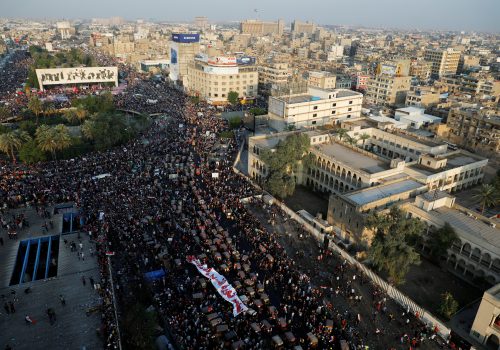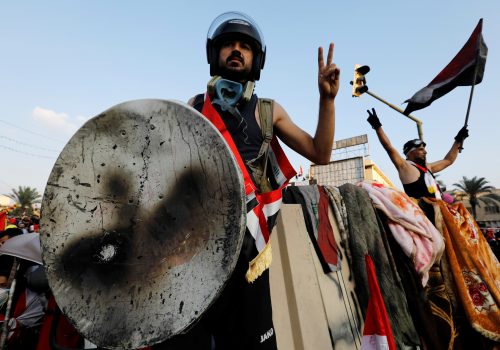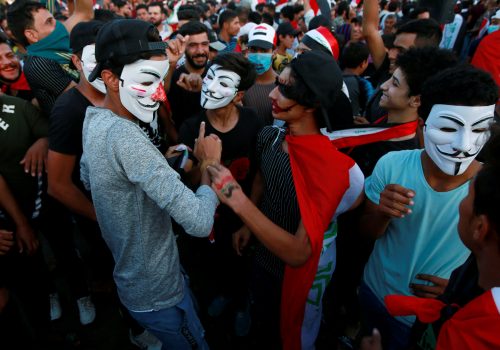Explainer: Iraq’s autumn of discontent
Waves of protests have hit Iraq this past October and November, calling for the resignation of the post-war government and sweeping changes. Last month alone, there have been reports of hundreds of protesters killed and thousands wounded by security forces in clashes across the country, from Tahrir Square in Baghdad to cities like Diwaniyah, Najaf, and Nasiriya in the south. These protests snowballed into the biggest security challenge Iraq has faced since the removal of the Islamic State (ISIS) nearly two years ago.
These protests are directed at the political system, the exploitative class of elite leaders, and the growing Iranian influence seen directly in the powerful Iraqi Shia militias. Demands for change are the following:
- Establish a new election law: to break up domination of entrenched political factions/parties, many of which are tied to Iran
- Root out corruption and demand the government’s resignation: to remove the elite class of leaders accused of pillaging the country’s wealth while the country continues to grow poorer
- Overhaul the judicial system: to ensure accountability and transparency is enforced
- Improve job opportunities and basic services: to counter deteriorating living conditions and unemployment
Significant places and events
As an OPEC member with the fourth largest proven oil reserves in the world, Iraq still suffers from high unemployment and poor public services. The sectarian power-sharing government put in place after the US invasion in 2003 developed an entrenched political class despite regular elections. Currently, the government is dominated by the country’s Shia majority, and protesters have largely hailed from this sect as well.
Protests are backed by the influential, pro-Iranian Shia cleric, and political leader, Muqtada al-Sadr. He called upon the government to resign, which sparked further anti-Iranian sentiment among protesters. However, from the beginning of their movement, the protesters’ message has been clear: to no longer accept any current religious or political leadership. Additionally, with a Shia majority, this group of protesters has surprisingly harbored anti-Iranian sentiment, smacking their shoes against banners of Ayatollah Ali Khamenei and chanting anti-Iranian slogans.
On the part of the Iraqi government, security forces have utilized live ammunition, rubber bullets, water cannons, and military-grade tear gas grenades in order to contain the protests and disperse demonstrators in certain areas. The international community has condemned the violent methods used by security forces. In addition to this, curfews have been placed in cities across the country, however this has done little to keep demonstrators from coming together.
[cool-timeline category=”iraq-protests” tags=”” story-content=”full” taxonomy=”category” layout=”compact” designs=”design-3″ skin=”default” show-posts=”100″ order=”ASC” icons=”NO” animations=”none” date-format=”F j” pagination=”default” filters=”no”]What is the future outlook for Iraq?
Changes have already been made in the aftermath of these waves of protests, such as the resignation announcement of Iraqi Prime Minister Adel Abd al-Mahdi along with the declaration by President Barham Salih to draft a new election law, with early elections to be planned once enacted. Further responses by the government and parliament have been to reshuffle posts and promise public sector jobs to fix the unemployment crisis. The ongoing demands of the protesters have been a long time coming, creating a social movement that is focused not only on changing the government, but the system itself.
Christiana Haynes is an intern with the Atlantic Council’s Middle East programs and a Master’s Candidate in Middle East Studies at The George Washington University.
Adam Aluzri supported in building the timeline function.
Related articles
Image: School students chant slogans as they take part in a protest over corruption, lack of jobs, and poor services, near the Governorate building in Basra, Iraq, October 28, 2019. REUTERS/Essam al-Sudani


